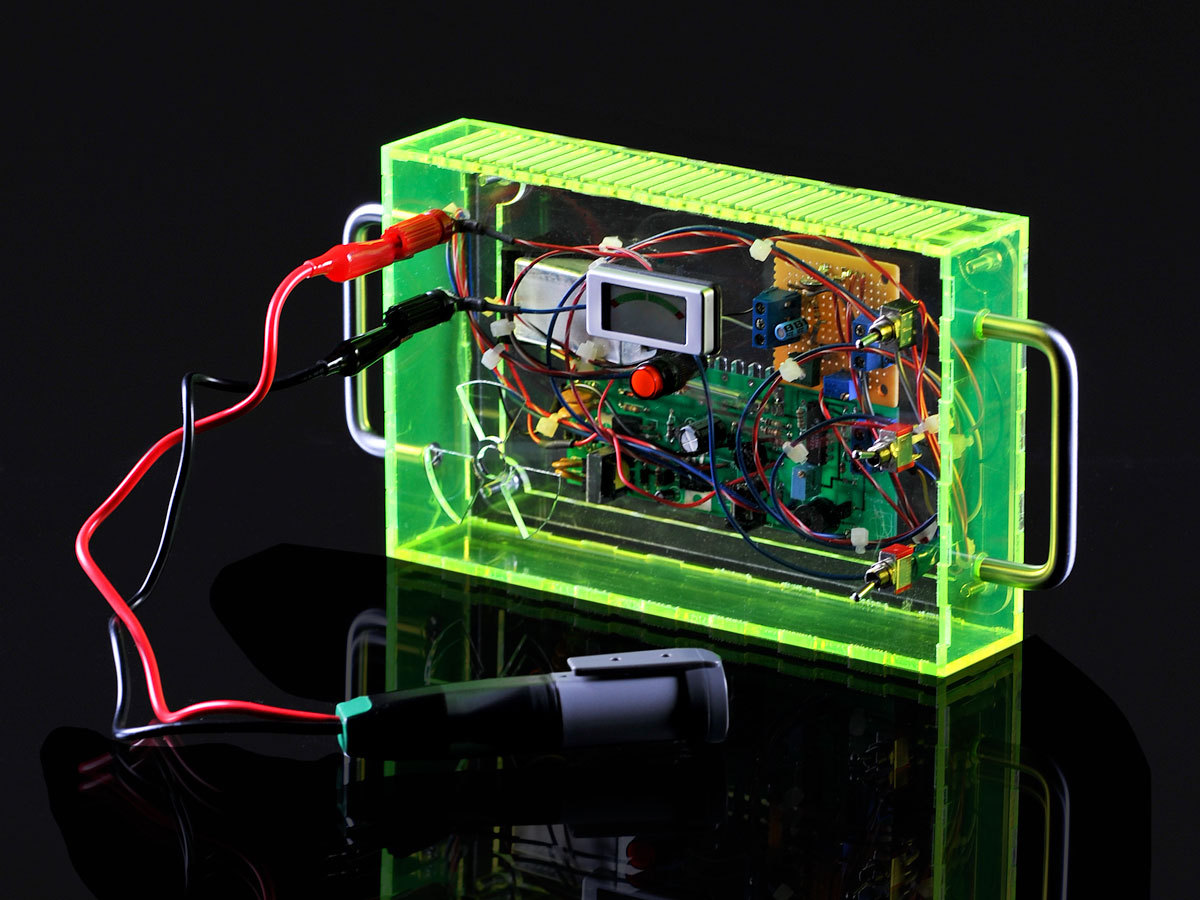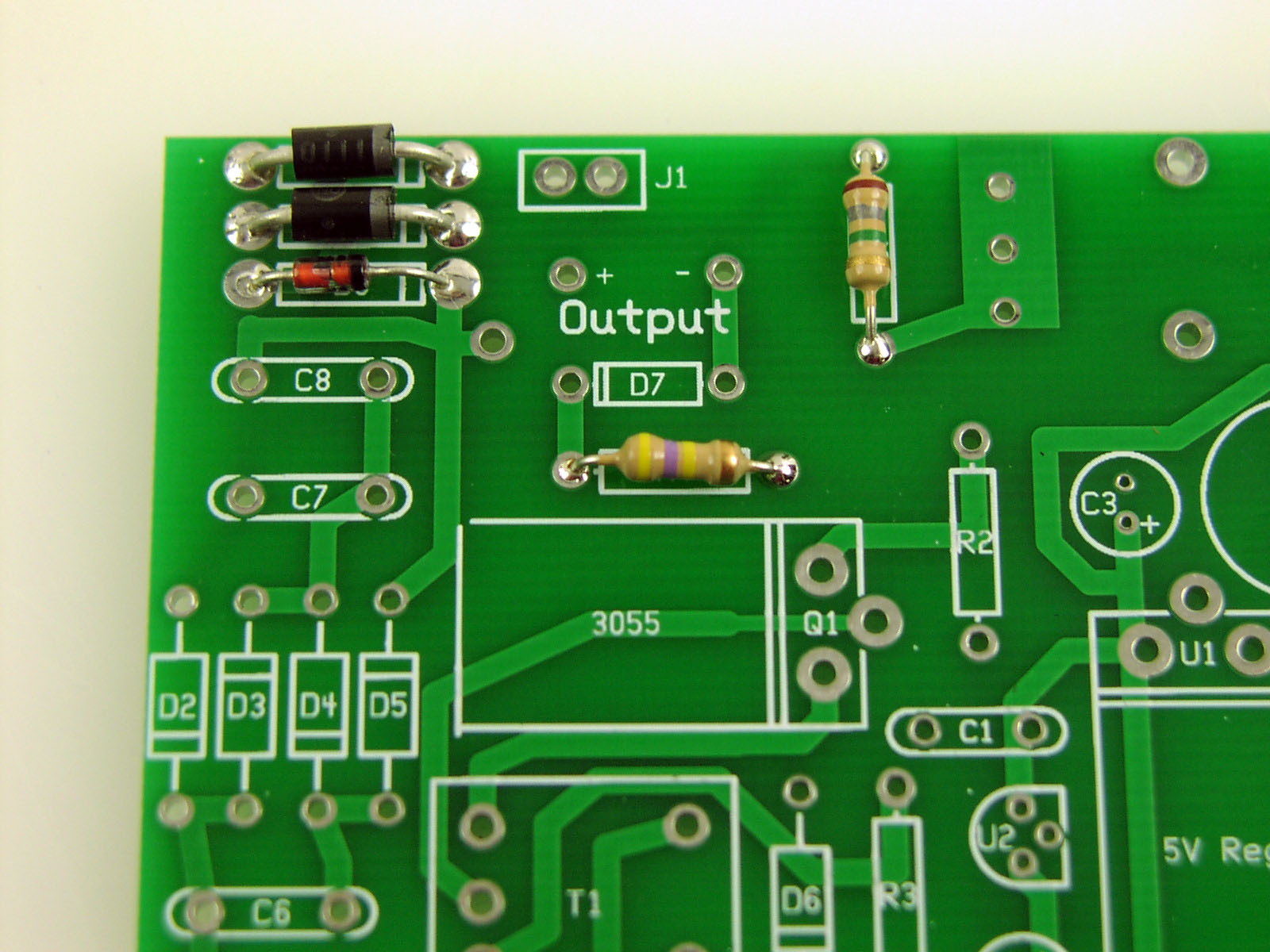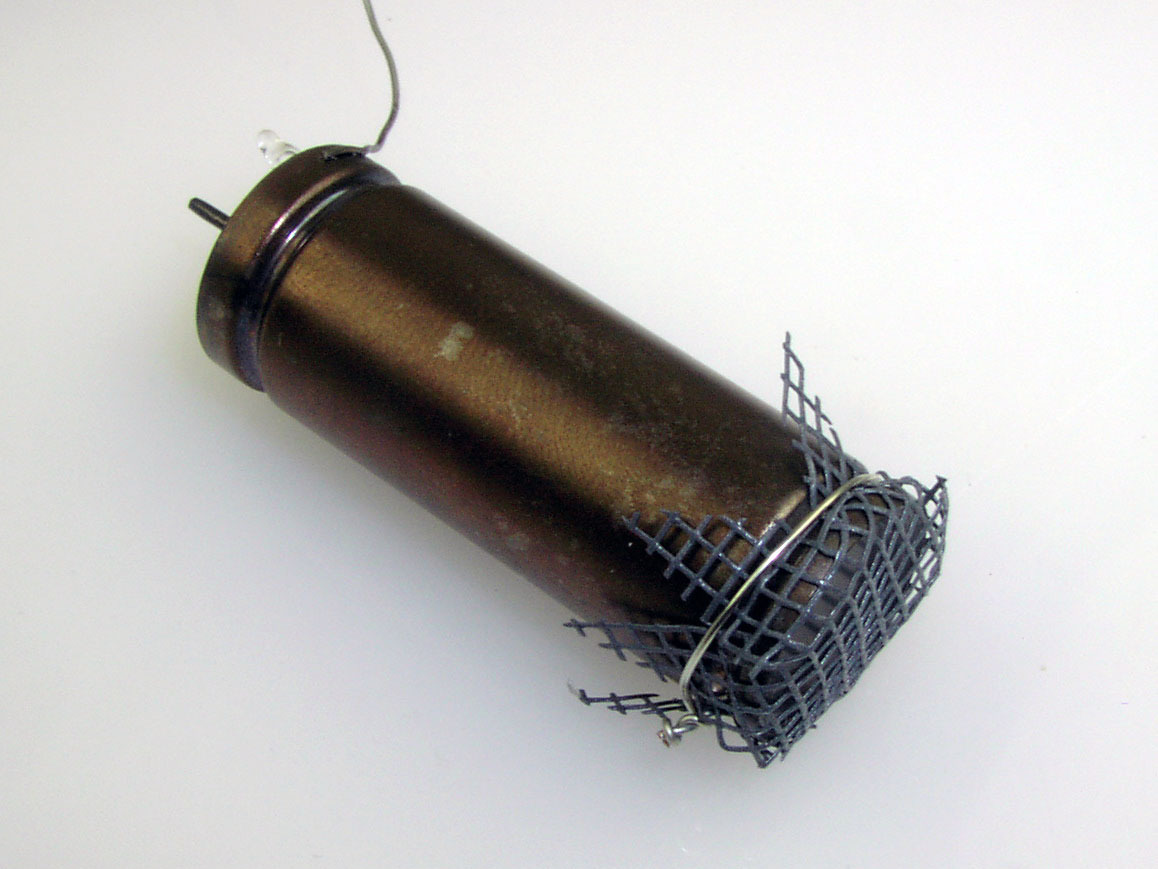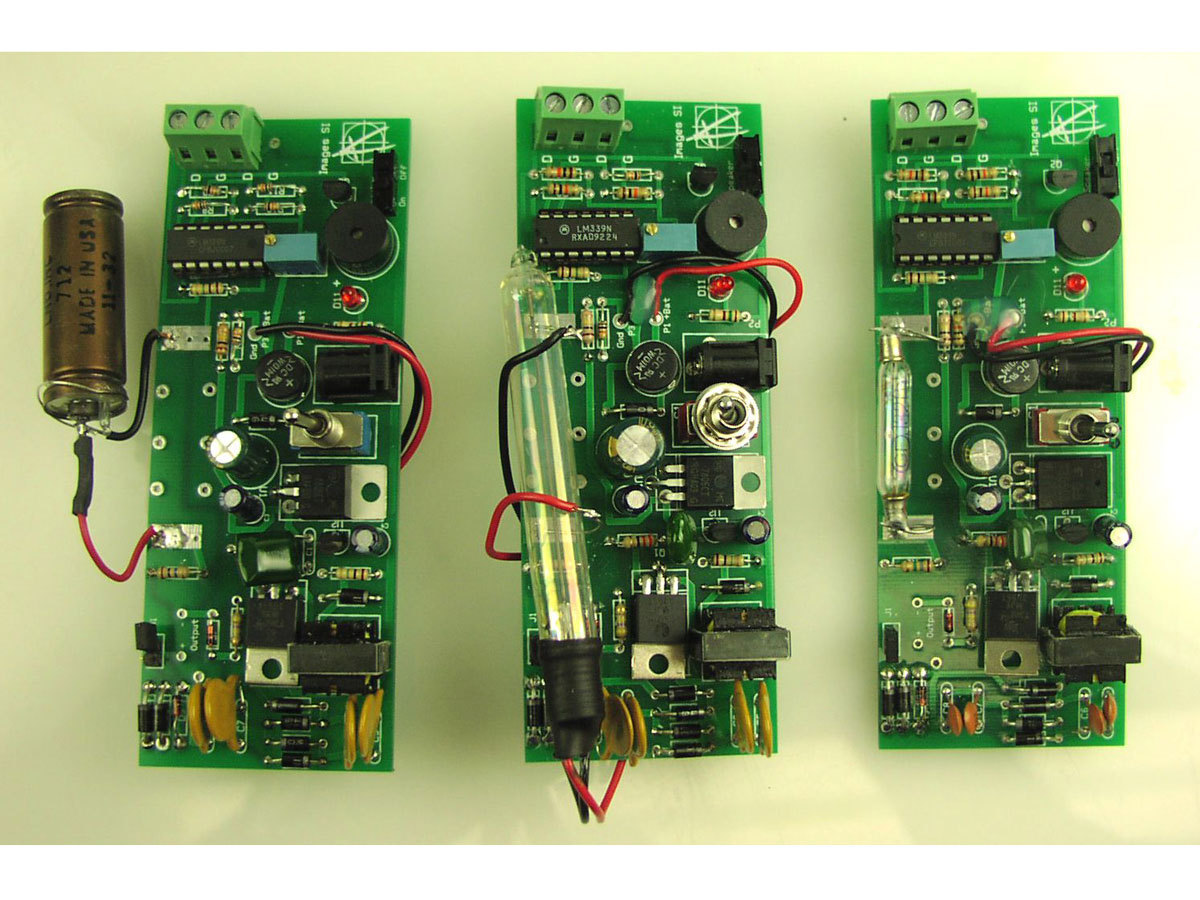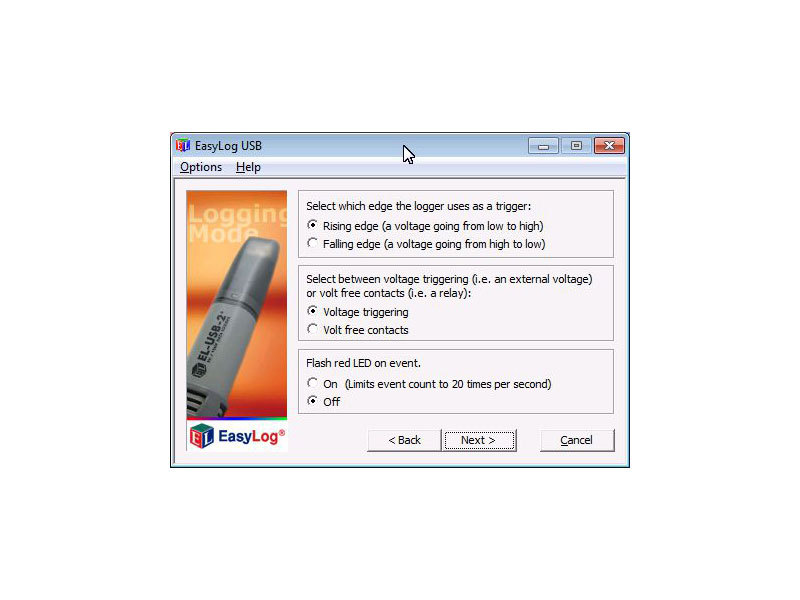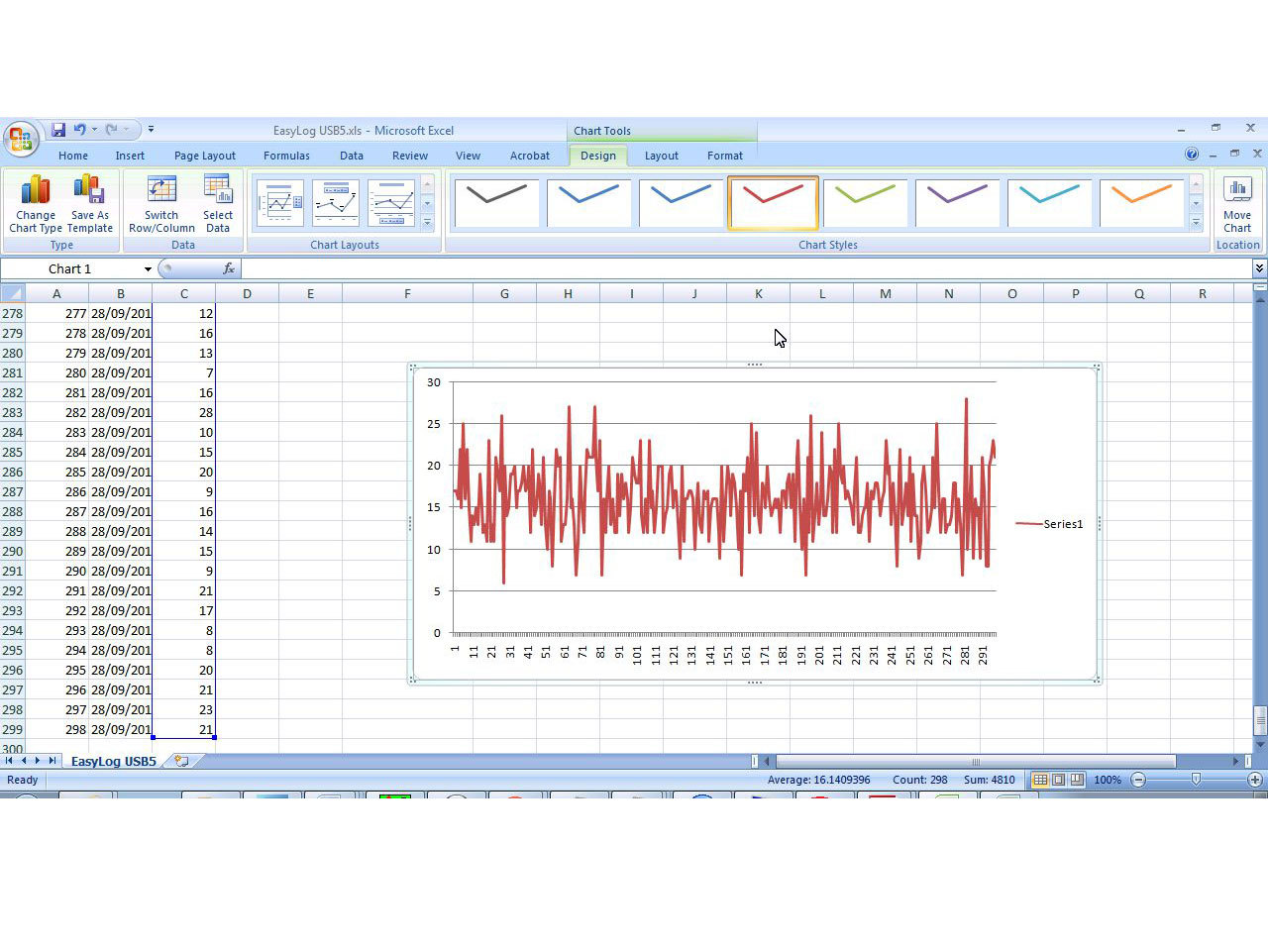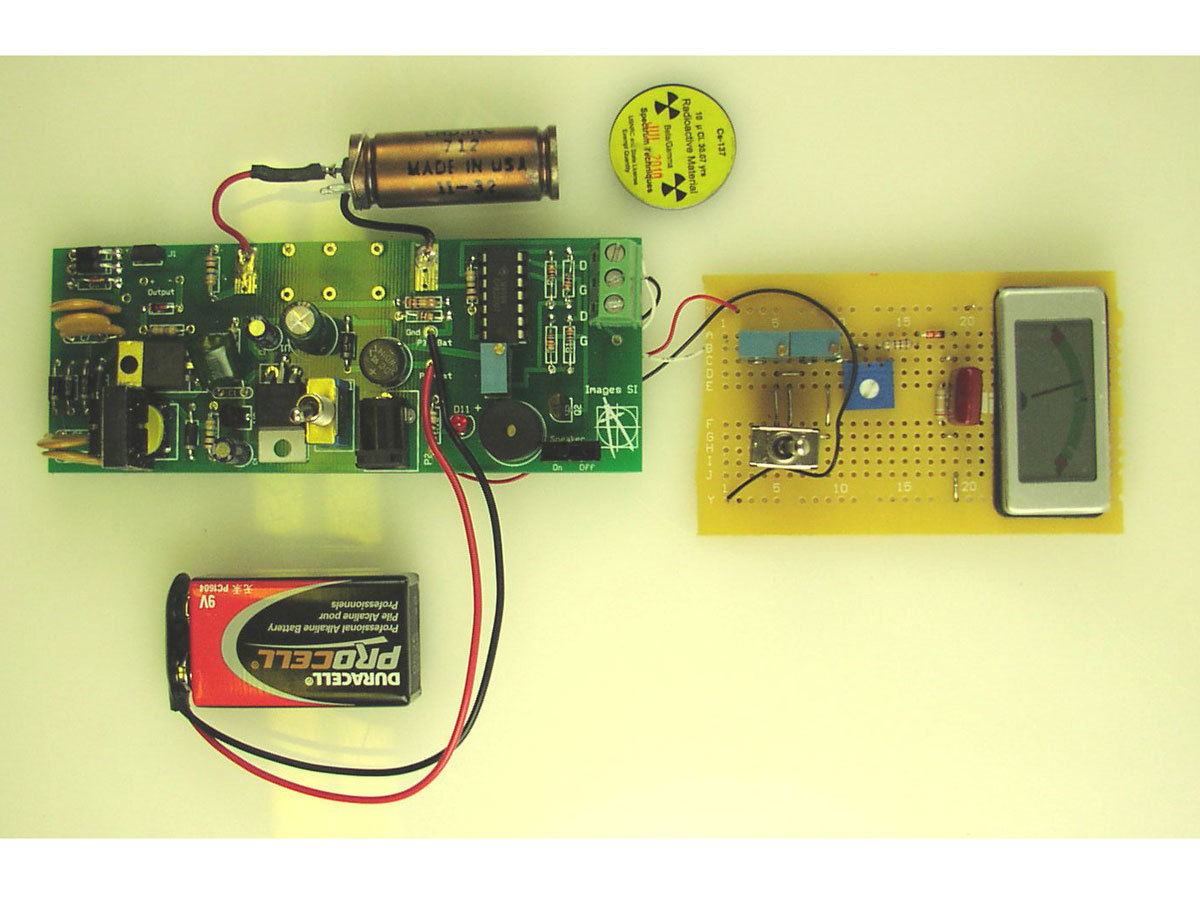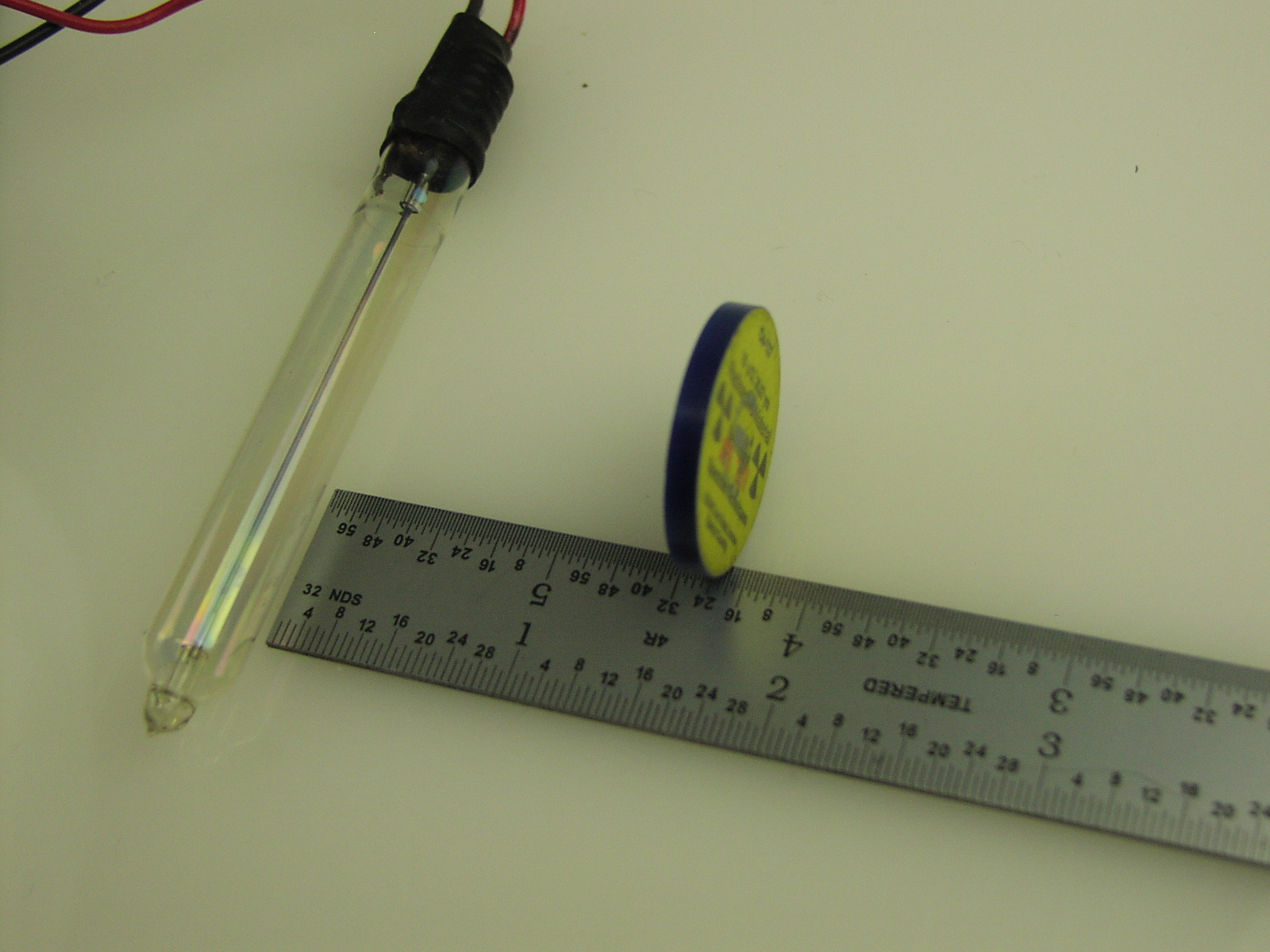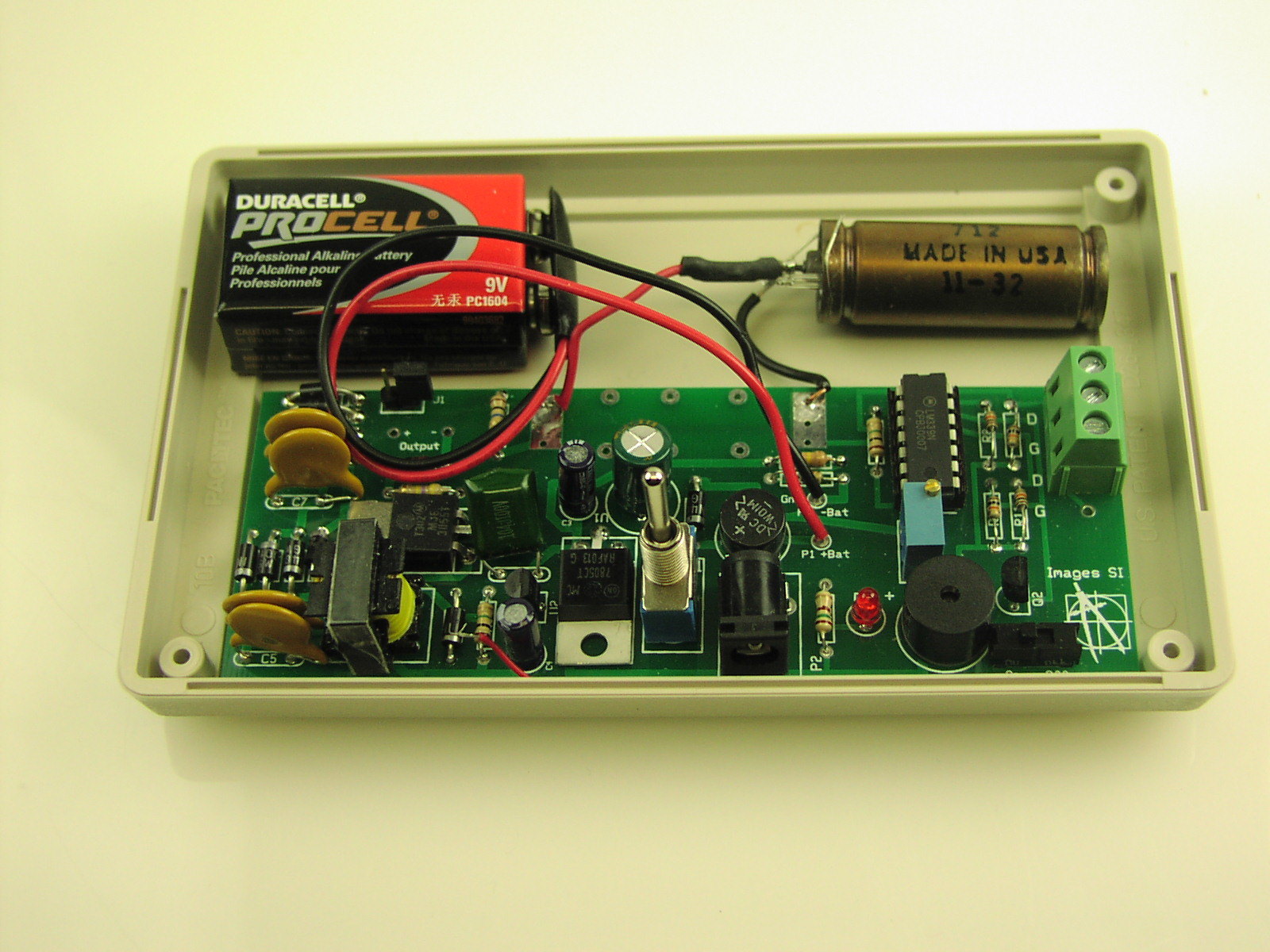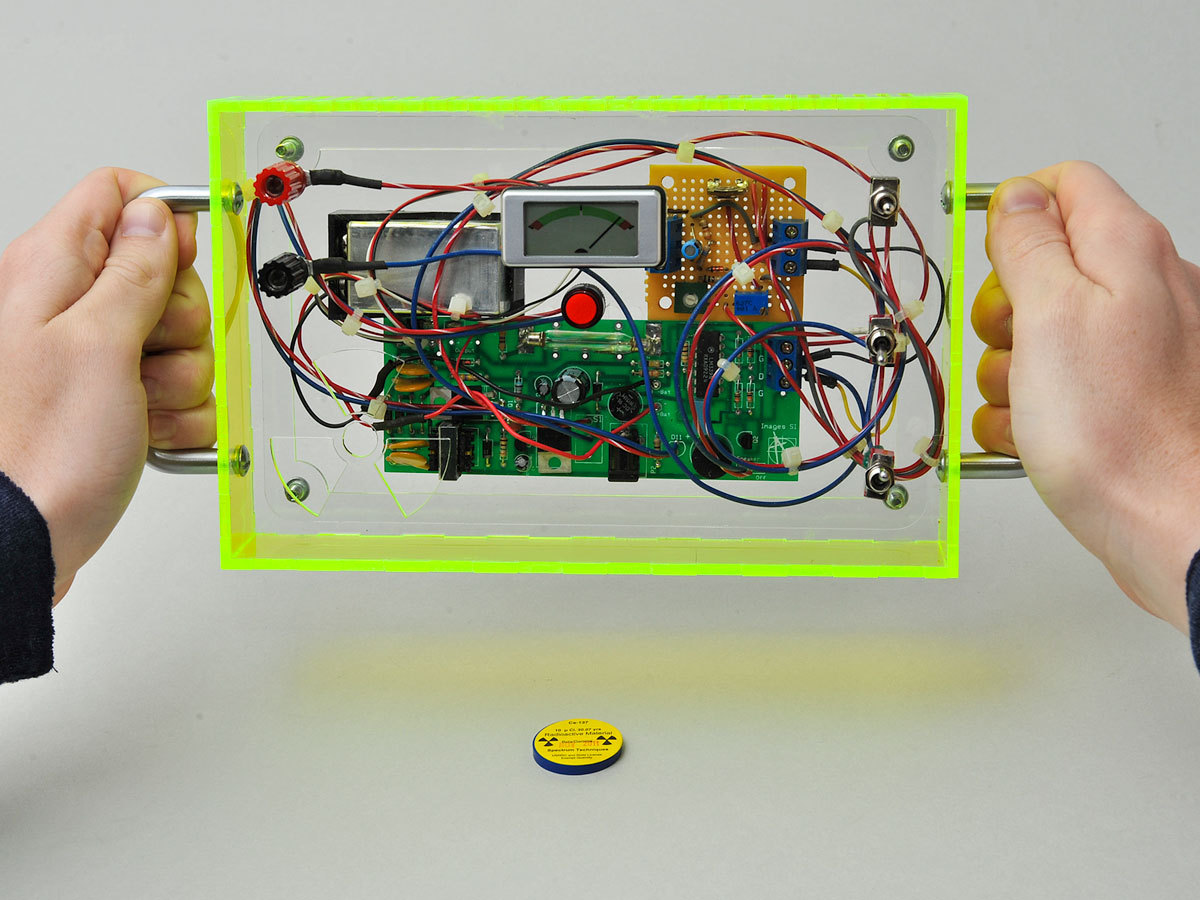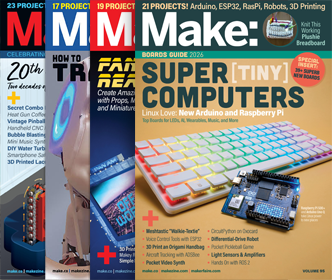I’ve been designing, making, and selling Geiger counters for 15 years through my company, Images Scientific Instruments. They’re fundamentally simple devices; you just need voltage high enough to run the Geiger-Müller (GM) tube. Anyone can design a counter that will work somewhat, but it’s hard to make one that’s reliable and long-lasting, because the electronics are so touchy.
Last year I was redesigning my basic Geiger counter circuit when the earthquake, tsunami, and nuclear crisis hit Japan. We sold out immediately, and I was so swamped with orders that I had to put my improved design on hold. But I finally finished, and here it is.
You can easily configure this counter to use a variety of GM tubes. Not only will it output a click and an LED flash with each radioactive particle detected, you can also connect it to analog or digital radiation-level meters, a PC for plotting data, a portable SD-card data logger for placing somewhere without a computer, and a true random number generator. It’s also compatible with the Radiation Network (http://radiationnetwork.com), so you can share your readings with others worldwide.
Project Steps
Assemble the PCB.
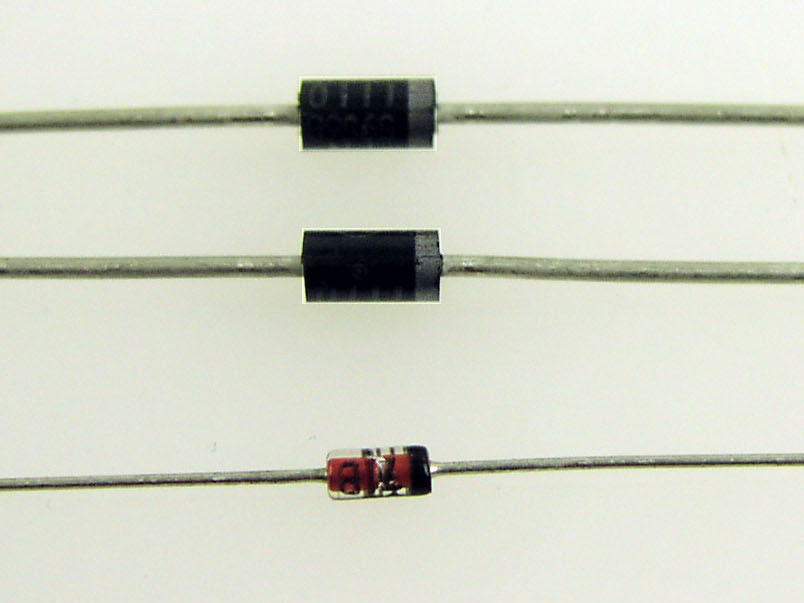
From your GM tube’s specifications, note the voltage required to drive it. This should be an even hundred number between 300 and 600 volts. Match this number by totaling the values of up to three 100V or 200V Zener diodes; for example, use two 200V Zeners and one 100V for a 500V tube.
Solder the Zeners into positions D8–10 on the circuit board, following correct polarity. Fill D8 with a 100V Zener, if used. Nearby jumper J1 bypasses D8, which lets you quickly adjust the tube voltage down 100V.
Find the values for anode and cathode resistors R5 and R4 by referring to the specifications for your GM tube.
For the tubes I stock, the recommended anode resistor value ranges between 2.2MΩ and 10MΩ. The LND 712 tube shown in Step 2a needs a 10MΩ anode resistor and a 470KΩ cathode resistor. Solder resistors R5 and R4 where indicated on the PCB.
Follow the silk-screened labels on the PCB (or the schematic diagram at http://makeprojects.com/v/29 if you’re breadboarding) to place and solder all remaining components to the PCB. Be sure to orient all components with the proper polarity.
Add the GM tube.

Identify the anode and cathode leads of your GM tube and connect them to the (+) and (–) tube terminals on the board, respectively; the anode (+) terminal is next to R5.
If you’re using the LND 712 tube, you can unplug its center, anode (+) terminal before soldering it to a short wire and soldering the wire to the board.
On glass tubes, the cathode (–) is the end where a short wire extends from the metal cap along the outside of the tube (then penetrates inside).
If your tube has a mica window at the end opposite the terminals, like the LND 712, install a fine mesh screen over it. This will protect the delicate mica while allowing alpha particles to pass.
Heat from hot glue or a soldering iron might damage the GM tube.
With a smaller tube, strap it down to the board with a few pieces of scrap wire, then dab on a small amount of glue or epoxy for added support. Take care if using hot glue, because heat can damage the GM tube.
Tune the counter.
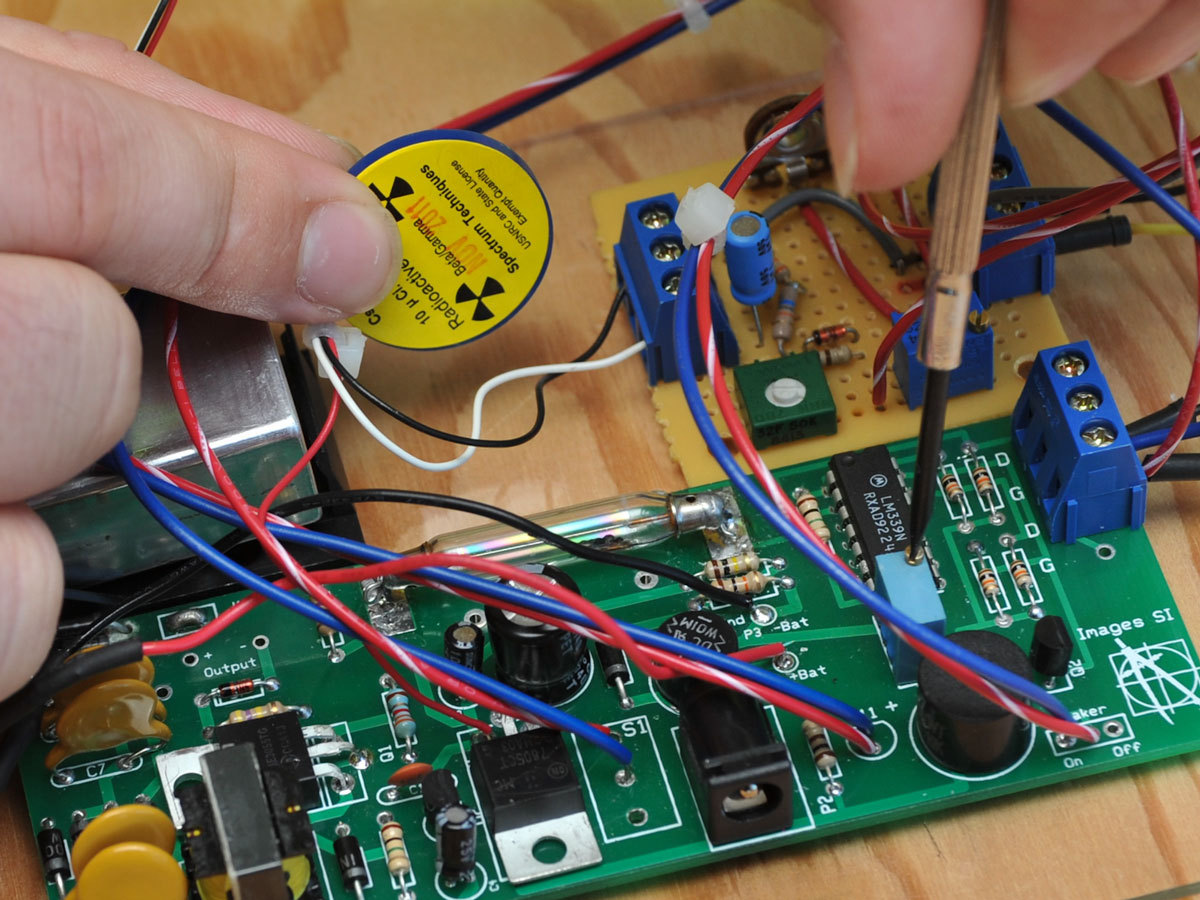
Turn on the Geiger counter and if you have a radiation source, bring it close to the GM tube.
Now simply adjust potentiometer R6 until you hear clicking and see the LED blink. Each click and flash represents the detection of one alpha, beta, or gamma particle passing through the tube (but not all such events are detected; it depends on the tube’s sensitivity).
Without a radiation source, background radiation from natural sources on Earth and cosmic rays will cause the Geiger counter to click. Where I live, background radiation triggers about 16 counts per minute (CPM) with an LND 712 tube.
That’s it — you’ve made a Geiger counter! The terminal block in the corner of the PCB has 2 pairs of output contacts for connecting to other devices: +3V–5V digital pulse signal (labeled “D” on the board) and ground (labeled “G”).
Connect a data logger.
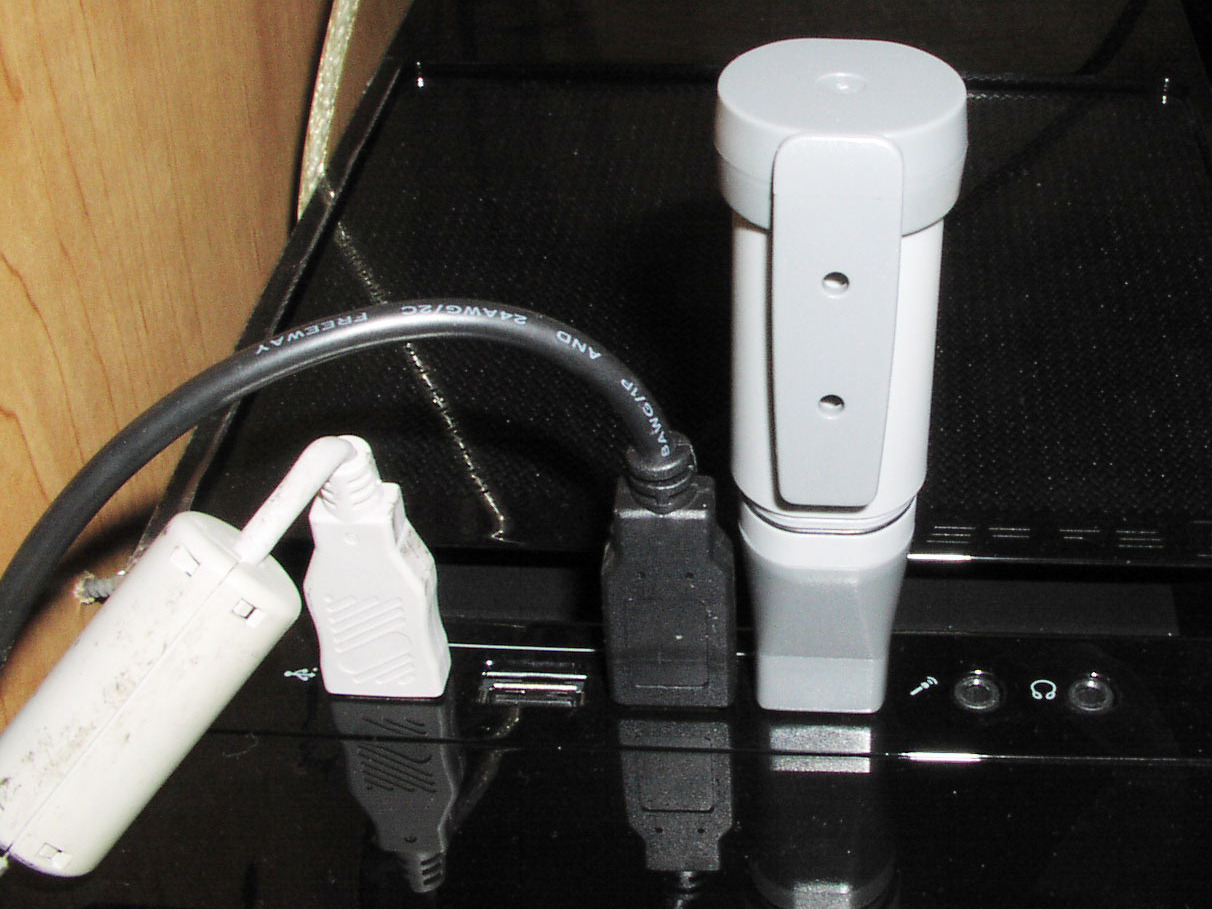
The following steps are optional. They explain how you can connect your Geiger counter’s output to a portable data logger, an analog meter, a digital display with serial output, and the Radiation Network, a public database that pools data from radiation monitoring stations worldwide.
Connect a 9V battery to the EL-USB-5 logger and plug the logger into a free USB port on your PC.
For logging radiation data from the field with a small, portable setup, I’ve used the EL-USB-5 Data Logger from Lascar Electronics. You can also use a smartphone with a data-logging application.
Run the installation CD, and select the Set Up and Start option. In the Name/Mode of Operation screen, select Count Events, and on the next screen, set the trigger to “Rising edge” voltage and the LED flash to Off.
For Voltage range, specify 0V–3V. The board outputs 4V–5V, but the data logger loads this output down to about 2.8V.
In the Time Period screen, choose 1 minute. Continue through the rest of the installation wizard, which is all self-explanatory.
You can specify a different increment than 1 minute, but note that the logger can count up to 32,510 events per period, at a maximum data rate of 100 events per second (with the LED off).
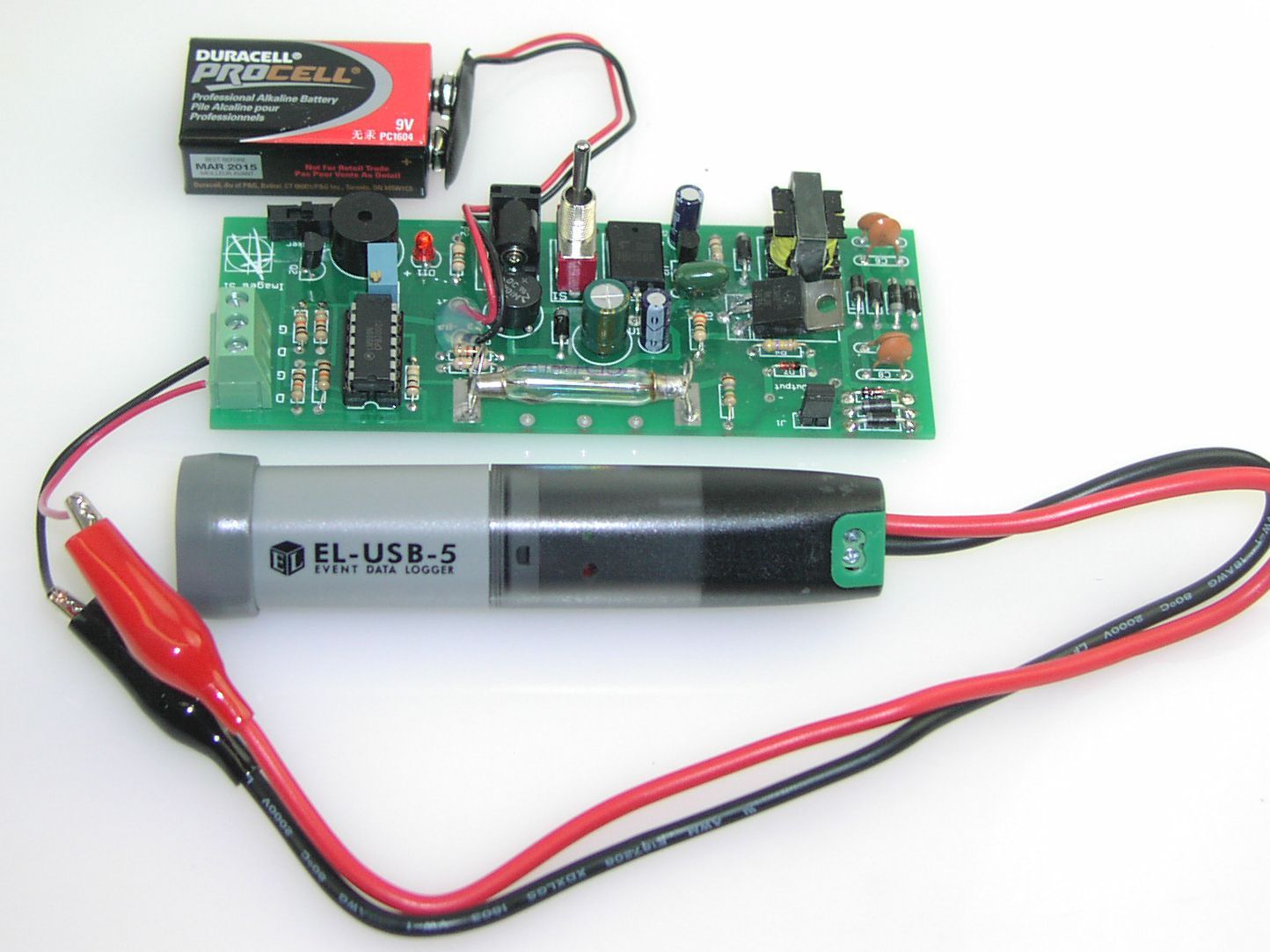
Connect the logger’s 2 alligator clips to the counter’s digital outputs, red to D (digital pulse) and black to G (ground). Cut and strip 2 short wire leads, screw them into the terminal block, and clip to the other ends.
Now the logger is collecting data, and you can bring it wherever you want to take readings.
Once your data is recorded, reconnect the logger to the computer via USB and save the data as a text file. You can then open the data file in Microsoft Excel and use the Chart Tools to graph and manipulate it in various ways. The image here shows 298 minutes of background radiation data graphed by CPM, which averaged at around 16.
Add an analog display.
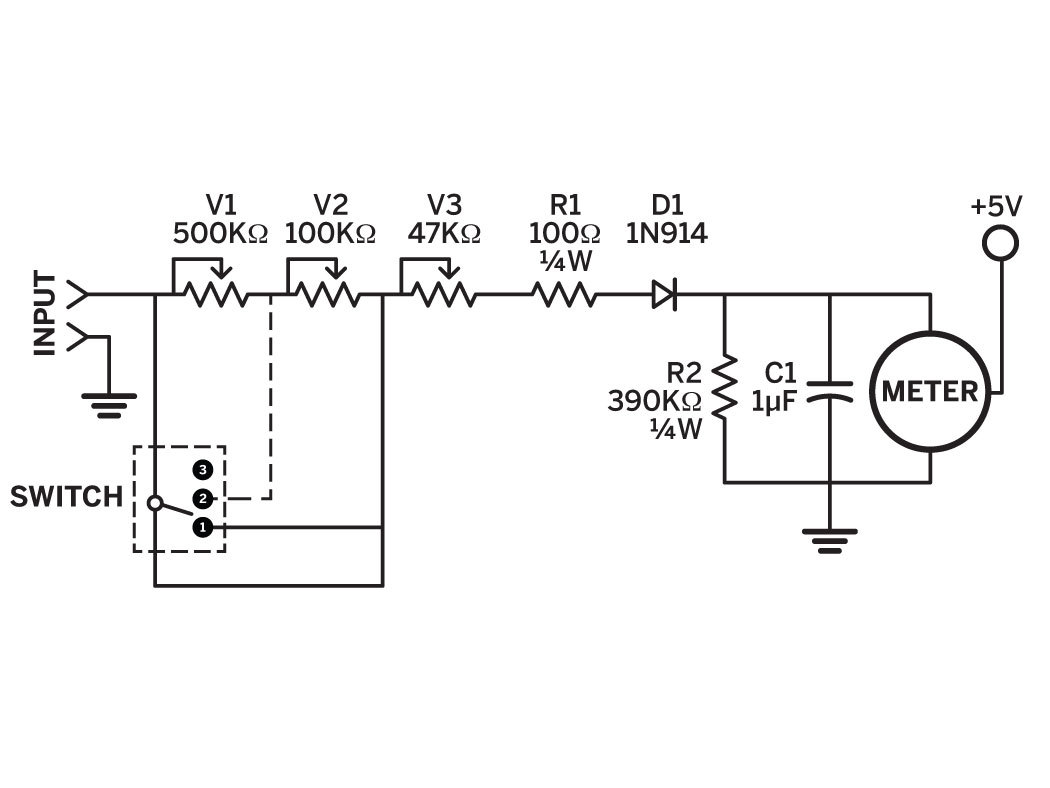
Adding an analog meter lets the counter display the current radiation intensity. This circuit is toggle-switchable to display 3 reading ranges, up to 1, 10, or 100 milliroentgens per hour (mR/hr).
On a small circuit board, assemble the circuit as shown in the photo.
Wire the counter board’s digital output and ground from the terminal block to the meter circuit’s inputs. Also connect the (–) terminal of the meter itself to ground. For the +5V needed to power the analog meter, connect it to any +5V contact on the counter PCB, such as the +5V side of the speaker or of the power jack (you can refer to the schematic or just eyeball the PCB).
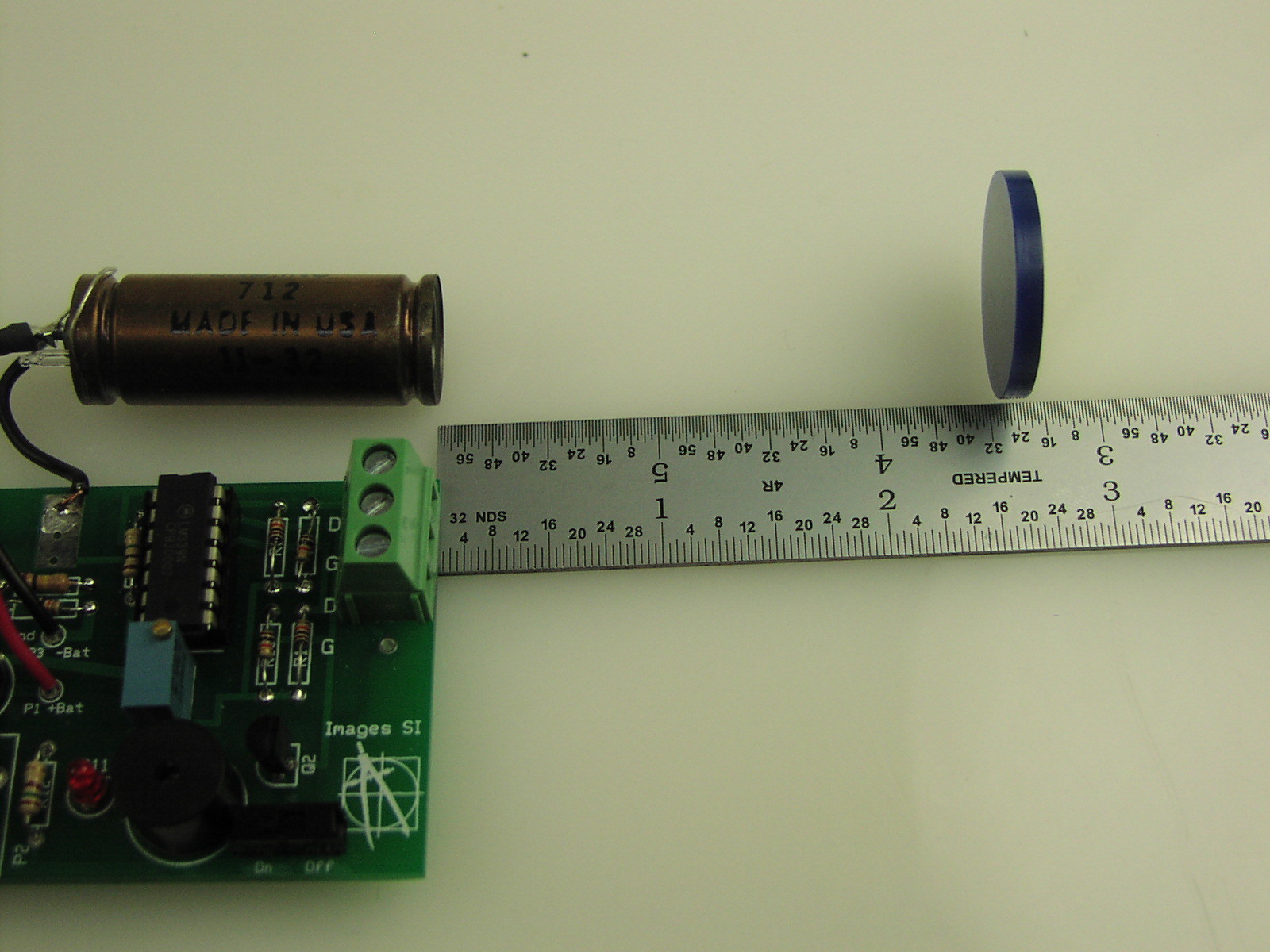
To get a ballpark calibration for the meter (with some GM tubes), we can use a 10μCi cesium-137 sample disk. The chart below shows how far to hold the disk away from the tube to expose it to approximate radiation levels of 1, 10, and 100mR/hr. With the toggle switch in position 1, use a small screwdriver to adjust potentiometer V3 so that the meter reads full scale when the disk is at the distance listed in the table. Flick the switch and move the sample to the second distance for adjusting potentiometer V2 to full scale, then do the same for pot V1.
For tubes like the GMT-01, which detect alpha particles through a mica end window, position the source facing the end. For other tubes, position the source facing the middle of the tube.
These values in the table are all approximate, as will be your calibration. Your tube’s response can vary +/– 20% from the tubes I used to write the table here. The strength of your radioactive source and the behavior of your electronic components can also vary, and all these factors affect accuracy.
Add an enclosure.
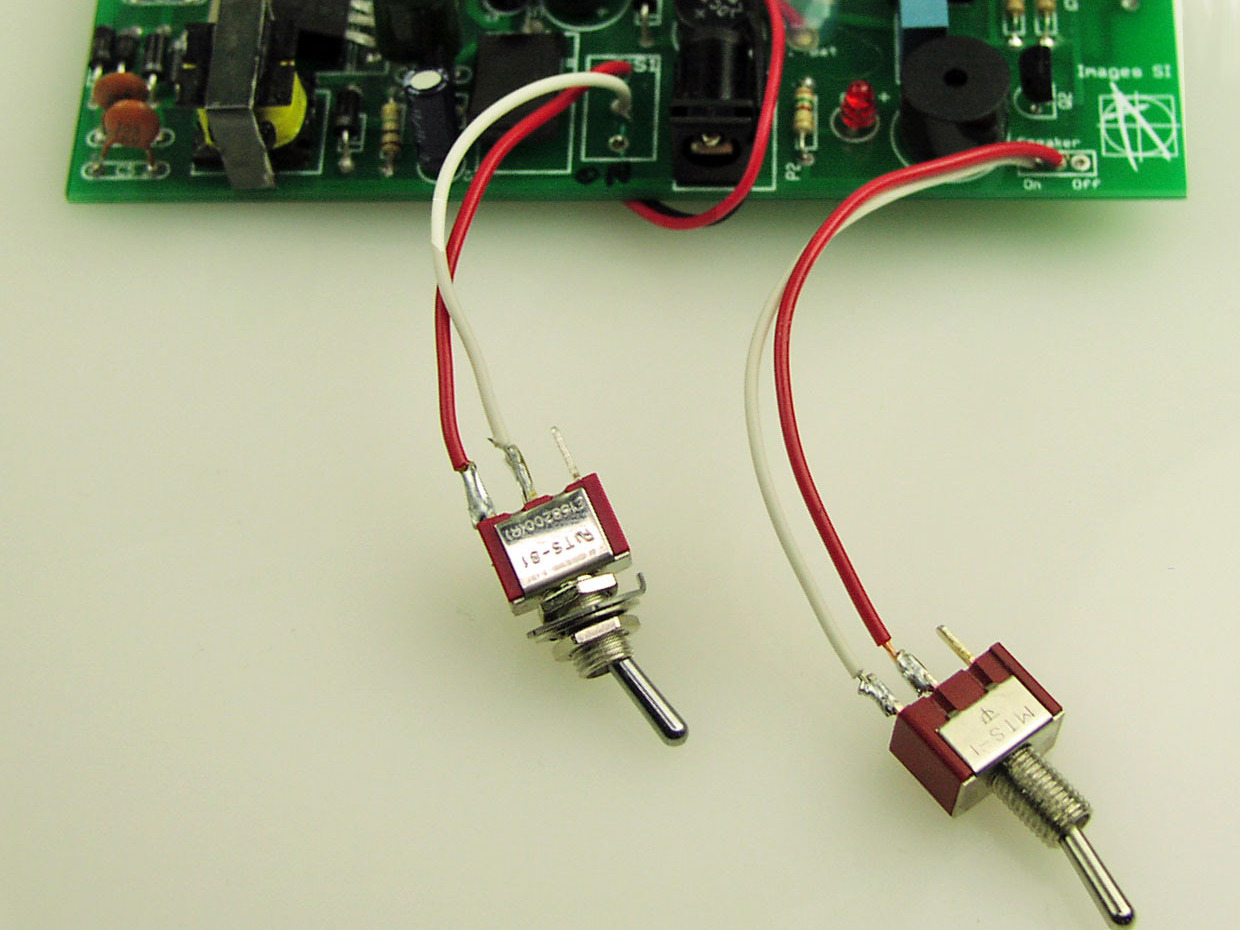
New line.Remove the power switch (S1) and the speaker on/off slide switch (S2) from the counter PCB, replace the slide with another toggle, and wire the 2 toggles offboard using 6″ lengths of wire.
If you added an analog meter, also remove its SPDT toggle switch and connect it offboard with wire leads.
Use a Dremel or other tool to cut holes in the enclosure’s front panel for mounting the toggles and the meter, if used.
If you’re using the GMT-01 or another tube with a window for alpha particles, cut a matching window in the side of the enclosure.
Mount the toggle and meter (if used) to the front panel. Secure the circuitry and tube inside using your preferred method.
For the PCB, you can drill holes in the board and lash it down inside the case using insulated wire anchored around machine screws, washers, and nuts.
For the GM tube, run 4 machine screws longer than the tube’s diameter up through the bottom of the case to surround the tube, secure the screws with washers and nuts, and lash the tube underneath with wire. Align the tube to its window if it has one. Enjoy your new Geiger counter!
Conclusion
The Hidden Landscape of Radioactivity
Test for Radioactive Contamination
If you’re testing for contamination, your GM tube should be sensitive to alpha radiation as well as beta and gamma (like the GMT-01).
Geiger counters can only test for gross levels of contamination that show up clearly above background radiation; they are not the proper instruments for detecting low-level contamination. That said, here is how to test for radioactive levels above background:
- Establish the background radiation level by measuring CPM for at least 20 minutes, and longer is better. Note the lowest and highest levels and then average them all to establish the baseline minimum, maximum, and average. With my data from Step 4, a 298-minute sample, my average CPM was 16, and min to max was 6 to 28.
- Position the GM tube very close to the top surface of the material you’re testing, and run the counter, recording the CPM output. The longer the run, the more accurate the results.
- Compare the radiation output of your sample against your baseline.
Alternative Sound Output
If you want louder clicks from your Geiger counter, you can use the alternative sound output circuit; see the schematic at http://makeprojects.com/v/29. In this circuit, the pulse signal from the comparator triggers a 555 timer chip, which is set up in monostable mode to stretch out the pulse it receives on its trigger. The output pulse from the timer flashes the LED and outputs an audible click to the speaker via pin 3.
The alternative circuit’s components (555 chip, caps, resistors) fit on a small breadboard. You can connect it to one of the main board’s digital outputs, or to where the standard light and sound output connects (LM339 pin 14), either replacing the original output or making it switchable.
Digital Meter Adapter
You can do more with your Geiger counter by wiring its digital output to a standard 3.5mm mono earphone jack, connecting ground to the sleeve contact and signal to the tip.
This output jack lets you connect the meter to my company’s Digital Meter Adapter (DMAD) an add-on that shows CPM or counts per second (CPS) along with milliroentgens per hour (mR/hr). Onboard switches also configure the adapter to work as a true random number generator, with multiple ranges. The DMAD (see inset, opposite) has a second 3.5mm plug for output, which lets you connect any of its output functions to a computer via 3.5mm to RS-232 serial cable.
Radiation Network
Want to help keep track of radiation levels nationwide? A 3.5mm output jack, as connected to the Digital Meter Adapter above, will also let your Geiger counter become a monitoring station for the Radiation Network (http://radiationnetwork.com), home of the National Radiation Map. The network software is sold with an adapter cable ($79 together).
For schematics and a template for an acrylic enclosure, see http://makeprojects.com/v/29.
Caution: The Author and Publisher do not make any warranties (express or implied) about the radiation information pro-vided here for your use. All information provided should be considered experimental. Safety and health issues and concerns involving radioactive contamination should be addressed, confirmed, and verified with local and national government organizations or recognized experts in this field.
This project first appeared in MAKE Volume 29, pages 100-111.


